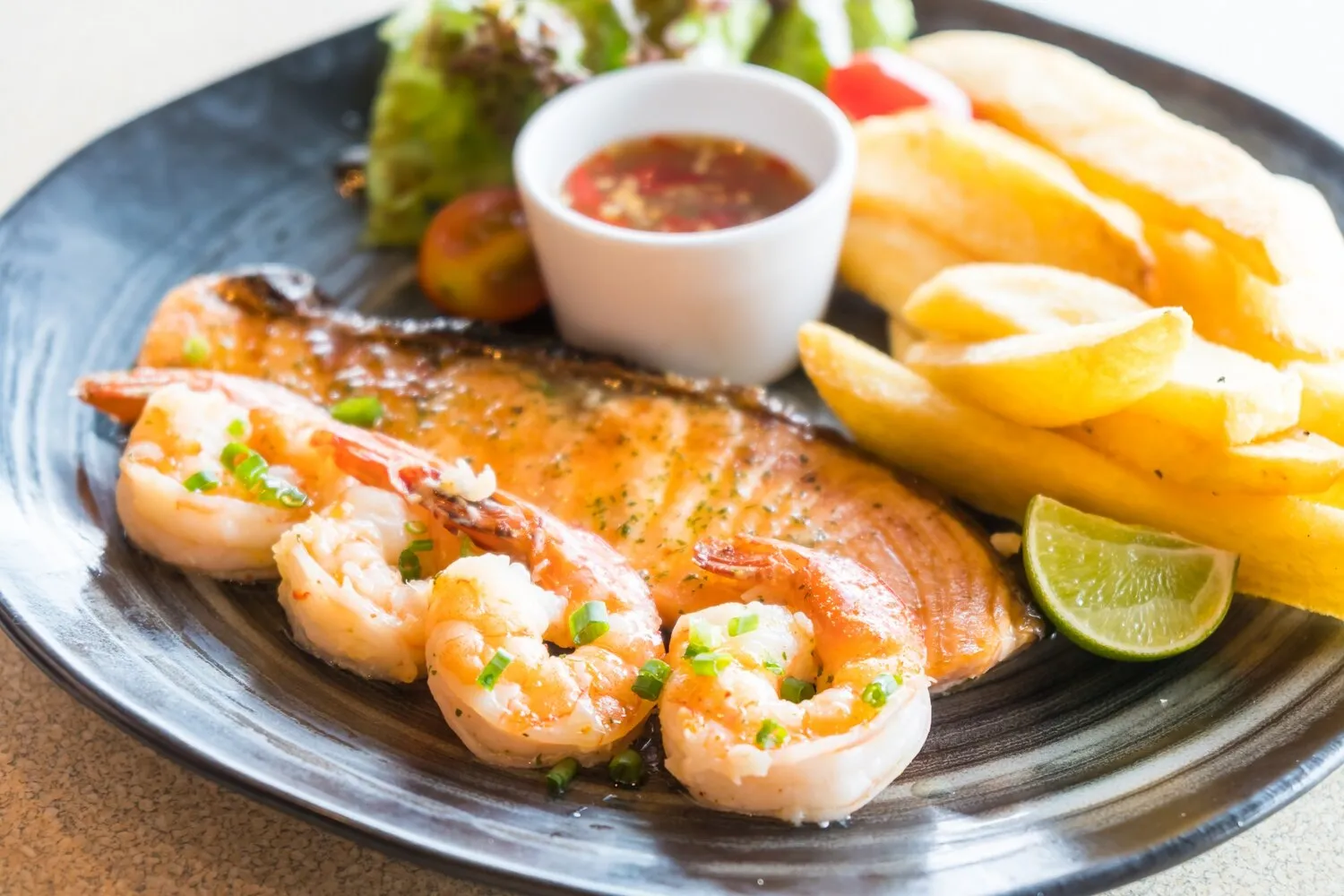
Steamed Fish
Fresh fish steamed to perfection, often prepared with soy sauce, ginger, and scallions.
Nutrition Facts
* The % Daily Value (DV) tells you how much a nutrient in a serving of food contributes to a daily diet. 2,000 calories a day is used for general nutrition advice.
Kam Ding Seafood Restaurant
Steaming is an ancient Chinese cooking technique, dating back thousands of years. It was originally favored due to its simplicity, efficiency, and ability to preserve the natural flavors and nutrients of food, especially in regions where resources like oil were scarce. Fish, a vital source of protein, was commonly prepared this way. The use of soy sauce, ginger, and scallions reflects the long-standing culinary traditions of East Asia, focusing on balancing flavors and enhancing umami.
Steamed fish holds significant cultural importance in many East Asian societies, particularly in China. It is often served at celebratory meals and banquets, symbolizing abundance and prosperity.
Symbolism of Fish
In Chinese culture, fish (鱼, yú) is a homophone for abundance (余, yú). Serving a whole steamed fish signifies a wish for surplus and prosperity in the coming year, especially during Chinese New Year celebrations.
Respect for Ingredients
Steaming is seen as a way to honor the quality of the ingredients. By using minimal seasoning, the focus is on showcasing the natural flavors of the fish, reflecting a deep respect for nature's bounty.
Communal Dining
Whole steamed fish is typically presented as a centerpiece and shared communally, fostering a sense of togetherness and family bonding during meals.
The dominant flavors in steamed fish are fresh, clean, and subtly savory. The dish highlights the delicate taste of the fish itself, enhanced by aromatics that complement rather than overpower.
Freshness is paramount. The fish should have a clean, subtly sweet taste, without any fishy odor. Soy sauce provides a savory umami depth, while ginger contributes a warm, slightly spicy note. Scallions add a mild oniony freshness. The steaming process retains the fish's natural moisture, resulting in a tender and succulent texture. High-quality light soy sauce is essential as is using fresh ginger and green onions. Some chefs add a touch of rice wine to further enhance the flavor profile.
Freshness is Key
Select the freshest fish available. Look for clear eyes, bright red gills, and firm flesh. The fish should smell fresh and clean, not fishy.
Proper Steaming Technique
Ensure the steamer is hot before adding the fish. Steam at high heat to cook the fish quickly and evenly. Avoid over-steaming, which can result in dry, tough fish. A good indicator of doneness is when the flesh is opaque and flakes easily with a fork.
Garnishing and Serving
After steaming, remove any excess water from the plate. Garnish with fresh scallions, cilantro, and a drizzle of hot oil for added flavor and visual appeal. Serve immediately to enjoy the fish at its best.
Scoring the Fish
Scoring the fish along its body allows the steam to penetrate more evenly, ensuring consistent cooking and preventing the fish from curling up during steaming. This also helps the flavors of the aromatics to infuse deeper into the flesh.
Explore additional Cantonese dishes and restaurants
Explore CantoneseDiscover top dining spots and culinary experiences in Coquitlam.
Explore CoquitlamLearn more about the food culture, restaurant scene, and culinary heritage of Canada.
Explore Canada